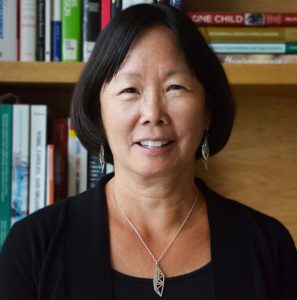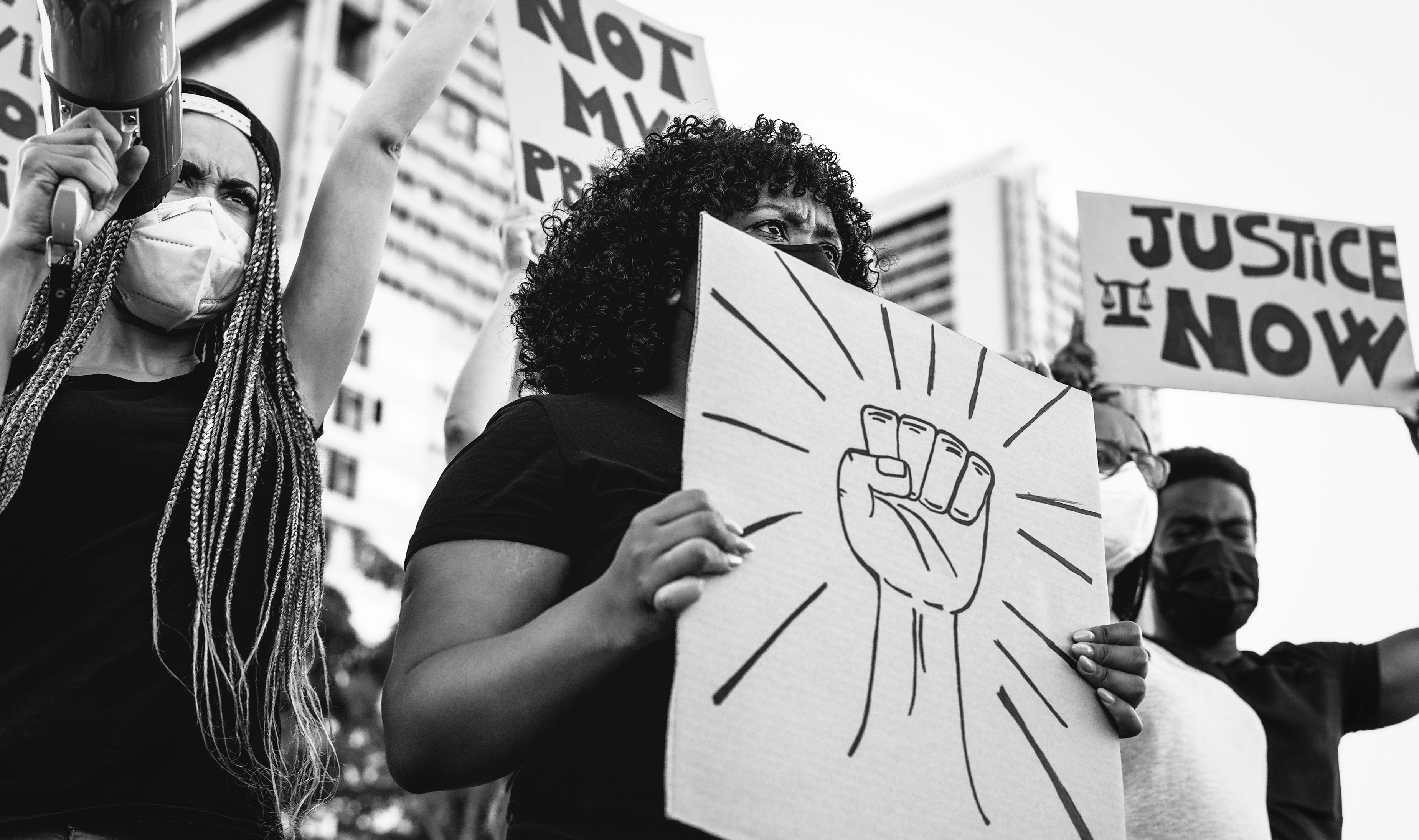More Words for Greater Action
In 2018, Barbara Chow authored a GrantCraft leadership series paper called “From Words to Action: A Practical Philanthropic Guide to Diversity, Equity, and Inclusion” that recognized that while communities around the country were experiencing rapid demographic shifts, philanthropy was not reflecting that same diversity in its grantmaking, nor working to account for historic disadvantage. The paper dives into the challenges and opportunities to explore how DEI can become more integrated into grantmaking practices and broader foundation ethos.
Much has changed since 2018 that heightens the importance of this work, so GrantCraft invited Barbara to share additional thoughts.
GrantCraft: What do you think has changed the most since you wrote the paper in 2018? What has remained the most unchanged?
Barbara Chow: April 2018 feels like a long time ago. In the intervening 3+ years, we’ve endured unimaginable catastrophes spanning nearly every aspect of our lives—environmental, political, health, racial injustice. The unexpected and unthinkable have become the hymnal of our time. So, in some larger contextual sense, everything has changed.
However, in the small microcosm of philanthropic life, change has been slower. Most of us have weathered the pandemic from our remote offices, we have pivoted our grantmaking to respond to COVID, we have become more conscious of issues of racial equity, our endowments did not suffer sharp declines as we had feared. Mostly, we are personally are OK. But we know the world is not.
The words “diversity, equity, and inclusion/DEI” have become deeply ingrained in philanthropy-speak, more so than at any time I’ve observed in the past. I’ve attended very few philanthropic conferences or gatherings that have not centered on issues of racial justice. On the word and reflection front, our awareness, statements, and conversations about DEI have grown in eloquence, passion, and genuine emotion. We have become good at finding the words to express our outrage.
And some of this has found its way into our grantmaking. According to a survey of foundations conducted by the Center for Effective Philanthropy (CEP), more than “three-quarters of foundations surveyed are making new efforts to support organizations serving communities of color.” (Foundations Response to Crisis: Toward Equity?) Nearly 60 percent say they are “now giving a higher percentage of grant dollars to organizations created and led by CEOs from communities most affected by the pandemic.”
But, while improving, there remains a gap between words, intentions, and actions. Looking at overall giving levels, philanthropy still allocates a relatively small percentage of funding to support specific racial and ethnic groups. Drawing on data from Candid, a report by PRE (Philanthropic Initiative for Racial Equity)—“Mismatched: Philanthropy’s Response to the Call for Racial Justice”—found that funding for racial equity in 2018 (the latest year of complete data) made up just 6 percent of all foundation and corporate giving. Candid’s Racial Equity Map makes publicly available the grants and pledges awarded in support of this topic in the United States since 2011.
One hopeful note is around data collection. Many foundations are now beginning to collect demographic data on their grantee organizations. They are using this data as a window into their grantmaking practices and to diagnose barriers that might prevent the increasing diversification of their portfolios. The William and Flora Hewlett Foundation recently wrote an excellent blog post on what they are learning from the demographic profiles of their grantees.
GrantCraft: What are the lessons learned from the guide that are still relevant?
Barbara Chow: If the past year has demonstrated anything it is how existing inequities are exacerbated when anything goes wrong. Those of us with privilege can buffer even extreme events like pandemics and wildfires. However, for so many, particularly marginalized Black, Brown, and Indigenous communities, this painful year has unleashed a torrent of health challenges, job loss, deep levels of stress, material hardship, hunger.
If ever there was a time to shift from words to action, this is the time. And yet in the same CEP report that suggested greater attention to issues of racial equity "leaders more frequently described reflecting and learning, rather than making changes to their internal policies and practices.” In part, I believe this is because those practices are still emergent and can feel overwhelming to implement. In this sense, this paper and others that focus on concrete shifts in grantmaking practices can provide actionable starting points, even if all the branches are not taken.
GrantCraft: What are you learning about DEI in your current role at the Heising-Simons Foundation?
Barbara Chow: Over the past year, my colleagues (Malia Ramler, Kim Brenneman, September Jarrett, Andrea Michel, and Sarah Lerner) and I at the Heising-Simons Foundation have followed one of those branches -- new grantee identification and selection coupled with following the lead of impacted communities -- through to its logical conclusion. The result has been a new grantmaking program called Families Lead California.
I have learned three things from this experiment: 1) equitable grantmaking practices take a lot of time; 2) this is in part because our systems are not set up for them; 3) nonetheless I believe these practices are worth it, and if we are to stick to our equity principles there aren’t a lot of alternatives.
The goal of Families Lead California was rooted in the idea of strengthening parent voice, recognizing that Black, Indigenous, People of Color (BIPOC) parent-led organizations could and should play a powerful role in shaping the future of early childhood education in California but would benefit from greater organizational capacity, peer learning, and financial support. We wanted to experiment with a model that centered the needs of community-based groups, placed parents at the decision-making table, opened our grantmaking beyond “the usual suspects” and provided for a wide variety of focal areas (well beyond our interests in early math, dual language learners, and policy advocacy).
What this meant was a near wholesale change to the way we sourced and evaluated grants. For example:
- We are usually an “invite-only” foundation with limited experience in supporting open Requests for Proposal (RFP). In Families Lead California, we ran an open process, which meant that we needed to create an RFP, circulate it widely, and hold information sessions for interested parties.
- We wanted a more inclusive decision-making process that shifted power to parents, which entailed identifying and compensating a set of knowledgeable but not conflicted parent advisors, coming to a common understanding of the goals of the project and proposal rating criteria, and then presenting their recommendations to our Board for approval.
- We sought to minimize the burden on potential grantees, by for example, requiring very short proposals, which meant that the Foundation staff needed to shoulder more of the due diligence process by conducting its own research into the organizations that applied for funding.
- We thought that written proposals may not convey all of the information we wanted to know, so we supplemented these with a set of interviews that included parent advisers and Foundation staff.
All of this took far longer, probably double the average processing time for an individual (or cluster) of grants. In sum, Families Lead California was a pilot to which we allocated 10 percent of our California grantmaking budget, but it absorbed about 30% of our Education staff time, required additional time and input from Foundation colleagues, and relied upon consultants to support the community advisor and RFP processes.
We learned that our grant systems were not well suited to this form of grantmaking. Like most foundations, our grants management systems assume that one proposal will be reviewed by one program officer and then pass through the various gates of approval. We had to ask our always gracious IT department to build a separate application outside of our standard grantee portal as well as create matching fields within Salesforce to enable clean recordkeeping and allow for more than one reviewer per application (including those from outside the Foundation). Our team also worked closely with our ever patient grants management team to develop a streamlined application process and with our communications team for support with informational webinars and more. Several of the organizations we chose to recommend were small and less established and we sought permission (happily given!) to waive financial due diligence requirements. And we needed our Board to take this leap of faith with us, which they did with enthusiasm and grace.
At this early point in our experiment, we do not know what the specific outcome of Families Lead California will be although we are making the bet that it will improve early education because those most impacted are at the helm. And it has already achieved one of our early goals which was to expose the Foundation to nonprofits that we had not met before and to raise questions in the diligence process that we might not have thought of. Our next steps are to co-create the precise measures of success along with the grantee organizations we will be supporting. This is messy, inexact, and time-consuming work.
At times, I have found this lack of certainty to be disorienting, as I’m fond of a clear theory of change, defined outcomes, and concrete metrics. Instead of being able to answer every question, we are asked (an unnaturally high standard to which many of us are insanely attached) we must admit that there is a lot we don’t know. In fact, traditional notions of expertise may not apply in this situation. But if we are to honor the equity goals that our strategy demands and achieve the impact we are hoping for, I don’t know any other way to get there other than some version of this effort. And I believe that having done it once, we and our systems will learn and improve in the next iteration.
GrantCraft: What would you like to say about the topic given today’s diversity climate?
Barbara Chow: Do something. Change something. Try something.







